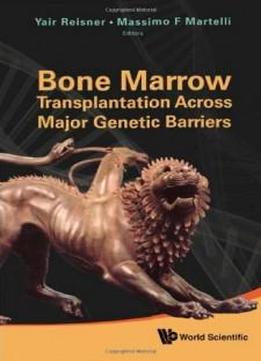
Bone Marrow Transplantation Across Major Genetic Barriers
by Yair Reisner /
2010 / English / PDF
3.3 MB Download
The importance of bone marrow transplantation for patients who do
not have a matched sibling donor cannot be overestimated. This
subject has always been in the public domain, accentuated by
dramatic appeals, from time to time, to search for matched
volunteer donors in the public at large. Unfortunately, the
availability of such donors is limited, due to the remarkable
genetic diversity of humans. Thus, although registries of such
volunteers now include more than eight million individuals, we
still face the problem of finding a matched donor for about 30% of
patients in need. To address this burning issue, extensive clinical
and basic research is performed in leading institutes around the
world.
The importance of bone marrow transplantation for patients who do
not have a matched sibling donor cannot be overestimated. This
subject has always been in the public domain, accentuated by
dramatic appeals, from time to time, to search for matched
volunteer donors in the public at large. Unfortunately, the
availability of such donors is limited, due to the remarkable
genetic diversity of humans. Thus, although registries of such
volunteers now include more than eight million individuals, we
still face the problem of finding a matched donor for about 30% of
patients in need. To address this burning issue, extensive clinical
and basic research is performed in leading institutes around the
world.
This book presents updated accounts of the different aspects of
this research. The scope of the book is very wide, including
strategies to overcome graft vs. host (GVH) disease and graft
rejection, cell therapy to prevent leukemia relapse, and a range
of modalities to improve immune reconstitution after
transplantation. In addition, new approaches to induce immune
tolerance towards organ transplants by means of hematopoietic
stem cell transplantation are extensively reviewed.
This book presents updated accounts of the different aspects of
this research. The scope of the book is very wide, including
strategies to overcome graft vs. host (GVH) disease and graft
rejection, cell therapy to prevent leukemia relapse, and a range
of modalities to improve immune reconstitution after
transplantation. In addition, new approaches to induce immune
tolerance towards organ transplants by means of hematopoietic
stem cell transplantation are extensively reviewed.











